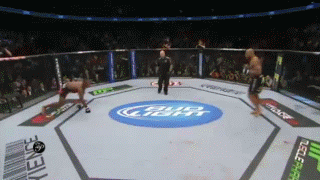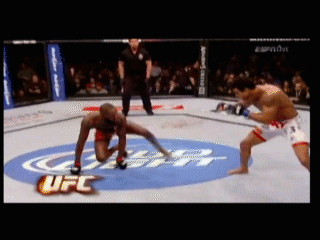The point is, if you practice with long low stances, it makes it that much easier to do high stances. It is much easier to switch from low stances to high stances than vice versa.Would you try and explain it then?
Navigation
Install the app
How to install the app on iOS
Follow along with the video below to see how to install our site as a web app on your home screen.
Note: This feature may not be available in some browsers.
More options
Style variation
You are using an out of date browser. It may not display this or other websites correctly.
You should upgrade or use an alternative browser.
You should upgrade or use an alternative browser.
Training In Long Low Stances
- Thread starter PhotonGuy
- Start date
Could you link one of those threads? I think I remember which technique your referring to, but not 100% on it. But personally, I don't see the point in abstract moves in forms. Either the move has a direct application, or it doesn't. If it doesn't, or if we no longer know it, we should either try to find out what that application is, or discard it from the form.I think the problem is you're training the movement and want it to mean something. I've got a similar issue with a lot of the techniques in the Taekwondo forms. A lot of the moves that appear quite consistently are abstract (at least to my understanding) and you want to see the benefit of training that movement over and over.
Starting with our green belt form, I've learned a total of 15 forms. 14 of those include the same technique that doesn't quite make sense to me. (I've brought it up in other threads, no need to rehash it here). The point is, since I've spent the last 4 years doing this technique over and over and over again, I want to see that it's been worth it to train that technique.
I think a lot of these cringy Bunkai videos are just that. "I've been doing this movement every other day for the last several years, and I still am not sure exactly why I'm doing it this way." So they try and try to figure it out, and they get a "best result" answer instead of a perfect answer.
IMO that application does not have to be a strike or throw or wristlock. If it's purpose is to train balance, or strength-building, that's perfectly fine. But it has to have a point, otherwise it's wasted training time.
Just find these clips.






Anything of him successfully lerforming a takedown from that height?Just find these clips.



I often wonder why those moves couldn't just be for the purpose of exercise and maintaining range of motion. I mean, if there are, let's say, 20 truly useful techniques (including kicks, strikes, blocks, and rudimentary sweeps) in a striking art, there's no reason those have to be the only movements in the forms. Heck, you could even include some techniques in forms that aren't terribly useful, but are either fun to practice or are just good exercise/challenge (I've done both). So I don't expect every movement in a form to be useful directly for fighting.I think the problem is you're training the movement and want it to mean something. I've got a similar issue with a lot of the techniques in the Taekwondo forms. A lot of the moves that appear quite consistently are abstract (at least to my understanding) and you want to see the benefit of training that movement over and over.
Starting with our green belt form, I've learned a total of 15 forms. 14 of those include the same technique that doesn't quite make sense to me. (I've brought it up in other threads, no need to rehash it here). The point is, since I've spent the last 4 years doing this technique over and over and over again, I want to see that it's been worth it to train that technique.
I think a lot of these cringy Bunkai videos are just that. "I've been doing this movement every other day for the last several years, and I still am not sure exactly why I'm doing it this way." So they try and try to figure it out, and they get a "best result" answer instead of a perfect answer.
Maybe that's a problem with forms that don't change. The guy who knew the exact purpose of every movement (application, strength, beauty, range of motion, challenge, whatever) dies and a tiny bit of that knowledge goes with him. The next generation dies, and you lose a bit of what was left. Add in the difference in how people remember what they were told, and over time there's confusion over what the forms mean. And then some techniques get adjusted/added/dropped as knowledge improves, but the form doesn't change to match.Could you link one of those threads? I think I remember which technique your referring to, but not 100% on it. But personally, I don't see the point in abstract moves in forms. Either the move has a direct application, or it doesn't. If it doesn't, or if we no longer know it, we should either try to find out what that application is, or discard it from the form.
IMO that application does not have to be a strike or throw or wristlock. If it's purpose is to train balance, or strength-building, that's perfectly fine. But it has to have a point, otherwise it's wasted training time.
From the striking art point of view, this move may only look fancy and fun. From the wrestling art point of view, this move is as simple as to grab on your opponent's leading leg ankle and pull.Heck, you could even include some techniques in forms that aren't terribly useful, but are either fun to practice or are just good exercise/challenge (I've done both). So I don't expect every movement in a form to be useful directly for fighting.
This is the low stance appliedI often wonder why those moves couldn't just be for the purpose of exercise and maintaining range of motion. I mean, if there are, let's say, 20 truly useful techniques (including kicks, strikes, blocks, and rudimentary sweeps) in a striking art, there's no reason those have to be the only movements in the forms. Heck, you could even include some techniques in forms that aren't terribly useful, but are either fun to practice or are just good exercise/challenge (I've done both). So I don't expect every movement in a form to be useful directly for fighting.
This is a picture of me teaching the application of a low stance.
What's happening in the picture: This is not a demo picture. It's a picture of someone actually trying to take me down. I asked the student to try to take me down as I stood in a high stance. Naturally grapplers want you to stand high so they can uproot you., their goal is to get under you which is why they always take their low stance, so I made myself an easy target. As he came in for his take down, I quickly dropped into my low stance. By dropping my stance it moved my waist out of his range and put it behind my punching guard. Here you can see that my waist is well guarded. My lead leg is also guarded now, any attempts to grab my lead leg will give me an opportunity to control him with my hands. My rear leg is out of danger
The biggest benefit of the low stance is that it puts me lower than the person trying to take me down. He can no longer get under me and uproot me. If he gets in too close then I can uproot him the same way he was thinking about up rooting me. I'm in a better position to grab his legs than he is to grab mine.
From this position I can still kick and launch forward. I can also set up a scissor takedown from this position. I can sweep, punch, grapple, elbow, and throw from this position. This position also narrows the options that a grappler can go after.
What my opponent is doing: My opponent is backing up because dropping my stance changed the position of the target he was initially going after when I was in a much higher stance. In short I screwed up his plans to take me down, so he abandons them
My legs are also in a good lifting position in the event that someone wants to try and over run me. Which is what happened in the last clip of this video.
At 1:02 you see me in a low stance . My opponents goes to grab the lead leg and I simply remove it.
Similar threads
- Replies
- 46
- Views
- 7K
- Replies
- 20
- Views
- 3K
